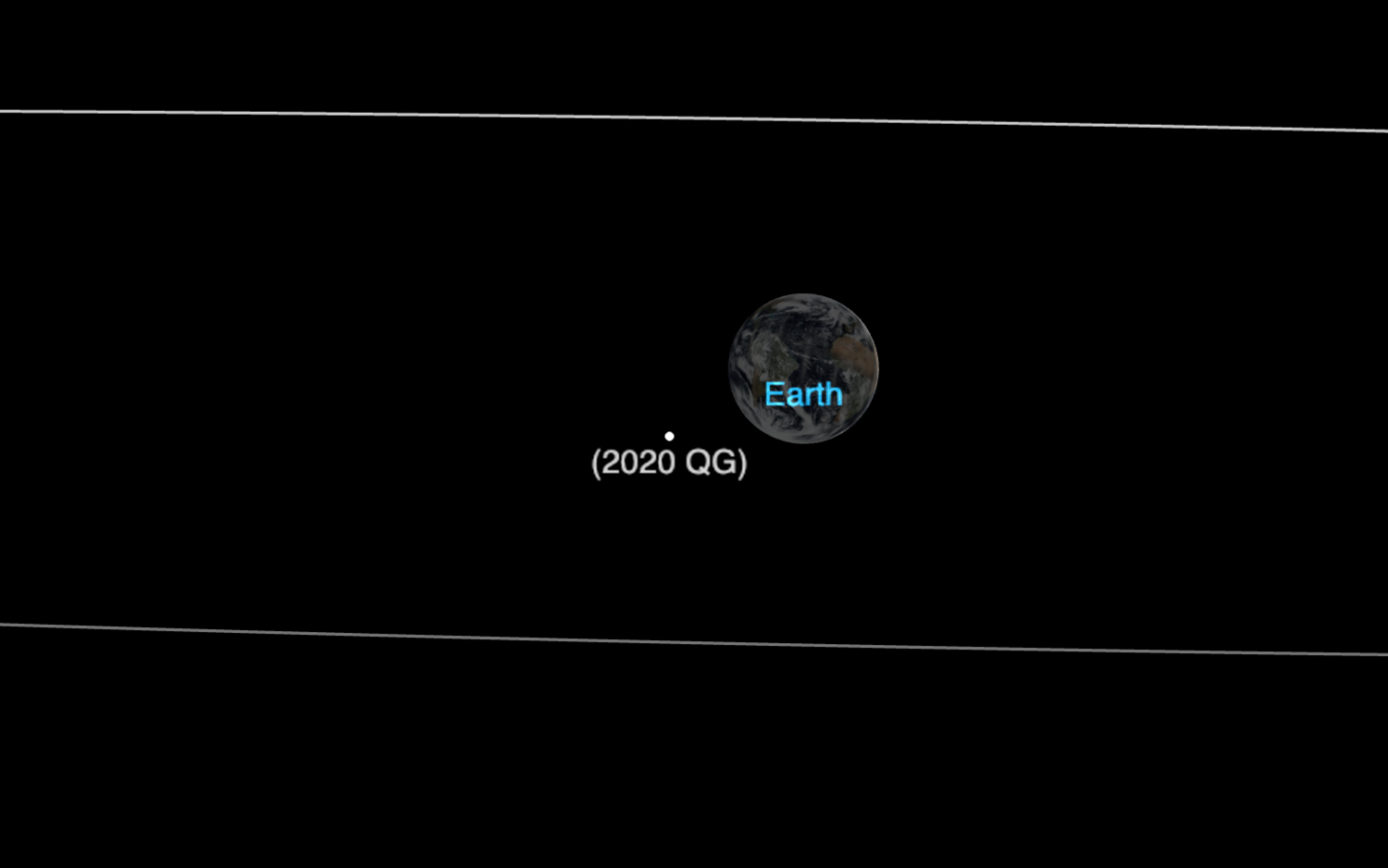A car-sized asteroid made the closest Earth flyby a space rock has ever survived
A newly discovered car-sized asteroid just made the closest-known flyby to Earth without hitting our planet.
On Sunday (Aug. 16), the asteroid, initially labeled ZTF0DxQ and now formally known to astronomers as 2020 QG, swooped by Earth at a mere 1,830 miles (2,950 kilometers) away. That gives 2020 QG the title of closest asteroid flyby ever recorded that didn't end with the space rock's demise.
It's the closest known, non-impacting asteroid, NASA officials told Space.com
Video: See asteroid 2020 QG's orbit around the sun!
Related: Potentially dangerous asteroids (images)
The flyby wasn't expected and took many by surprise. In fact, the Palomar Observatory didn't detect the zooming asteroid until about six hours after the object's closest approach. "The asteroid approached undetected from the direction of the sun," Paul Chodas, the director of NASA's Center for Near Earth Object Studies, told Business Insider. "We didn't see it coming."
Related: Famous asteroid flybys and close calls (infographic)
"Yesterday's close approach is [the] closest on record," Chodas told Business Insider. "If you discount a few known asteroids that have actually impacted our planet."
Breaking space news, the latest updates on rocket launches, skywatching events and more!
The close flyby was also a fast one, as 2020 QG swooped near Earth at a blistering 27,600 mph (44,400 kph). The object is about the size of a compact car, perhaps about 10 to 20 feet (3 to 6 meters) in diameter.
According to the International Astronomical Union's Minor Planet Center, 2020 QG flew over the Pacific Ocean, far east of Australia, during its close approach. To explore the daredevil asteroid for yourself, you can check out NASA's Jet Propulsion Laboratory's small-body database browser here.
Email Chelsea Gohd at cgohd@space.com or follow her on Twitter @chelsea_gohd. Follow us on Twitter @Spacedotcom and on Facebook.

Chelsea “Foxanne” Gohd joined Space.com in 2018 and is now a Senior Writer, writing about everything from climate change to planetary science and human spaceflight in both articles and on-camera in videos. With a degree in Public Health and biological sciences, Chelsea has written and worked for institutions including the American Museum of Natural History, Scientific American, Discover Magazine Blog, Astronomy Magazine and Live Science. When not writing, editing or filming something space-y, Chelsea "Foxanne" Gohd is writing music and performing as Foxanne, even launching a song to space in 2021 with Inspiration4. You can follow her on Twitter @chelsea_gohd and @foxannemusic.

